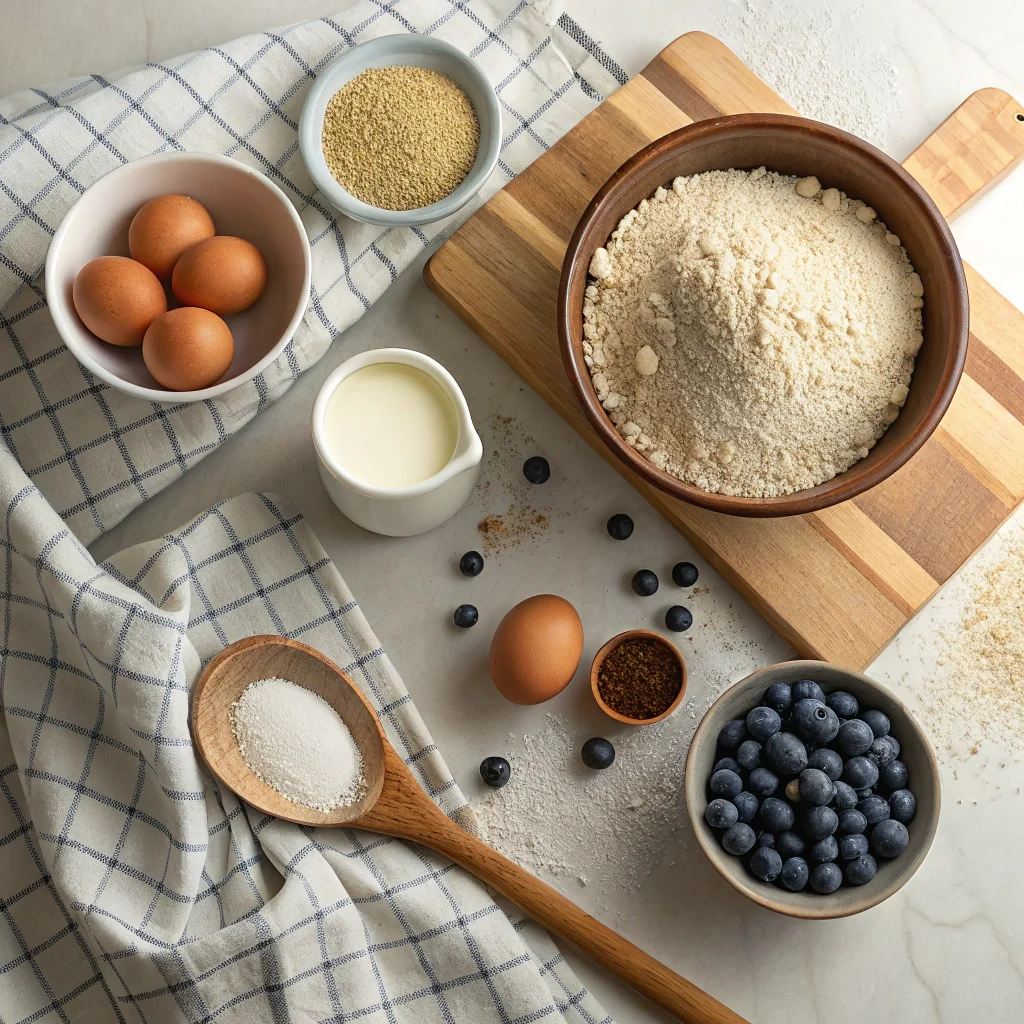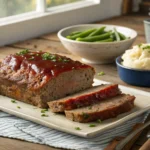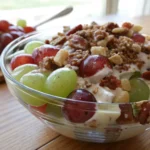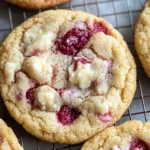Imagine starting your day with a stack of fluffy pancakes made from buckwheat flour and quinoa flour, a perfect blend for gluten-free pancakes. These nutritious pancakes are delicious and provide a great alternative to traditional pancakes. You can create the fluffiest and most mouth-watering gluten-free pancakes with the right combination of buckwheat flour and quinoa flour.
Table of Contents
The Perfect Blend: Understanding Buckwheat and Quinoa Flour
Buckwheat flour and quinoa flour are two highly nutritious ingredients that make an excellent gluten-free flour blend. The benefits of buckwheat flour include its high protein and fiber content, offering a healthier alternative to traditional flours. Meanwhile, quinoa flour is rich in minerals and antioxidants, making it a valuable addition to various quinoa flour recipes. Buckwheat’s nutty flavor works well in hearty dishes like pancakes and bread, while quinoa’s mild flavor suits delicate pastries and cakes. Combining these flours creates a versatile blend, perfect for gluten-free pancakes, waffles, and other baked goods. This combination ensures both great taste and enhanced nutrition.
Properties of Buckwheat Flour
Buckwheat flour is high in protein and fiber, making it an excellent choice for those looking for a nutritious alternative to traditional flour. It also has a distinct nutty flavor that pairs well with sweet and savory ingredients. Some of the key benefits of using buckwheat flour in your recipes include:
- High protein content
- High fiber content
- Distinct nutty flavor
Benefits of Quinoa Flour
Quinoa flour is rich in minerals and antioxidants, making it a great addition to quinoa flour recipes. It also has a milder flavor than buckwheat flour, making it perfect for delicate pastries and cakes. Some of the key benefits of using quinoa flour in your recipes include:
- Rich in minerals and antioxidants
- Milder flavor than buckwheat flour
- Perfect for delicate pastries and cakes
Why This Combination Works
The combination of buckwheat flour and quinoa flour works perfectly because it creates a balanced and nutritious gluten-free flour blend. The buckwheat flour provides a distinct nutty flavor and high protein content, while the quinoa flour adds a milder flavor and rich mineral content. This combination is perfect for making delicious and healthy pancakes, waffles, and other baked goods. By using this gluten-free flour blend, you can create a variety of quinoa flour recipes that are not only delicious but also nutritious and healthy.
Essential Ingredients for Your Gluten-Free Pancakes
To make these fluffy pancakes, gather the following ingredients:

- 1 cup buckwheat flour
- 1/2 cup quinoa flour
- 2 teaspoons baking powder
- 1/2 teaspoon baking soda
- 1/4 teaspoon salt
- 1 tablespoon sugar or preferred sweetener
- 1 1/4 cups milk (dairy or plant-based)
- 1 large egg (or egg substitute for vegan)
- 2 tablespoons melted butter or coconut oil
- 1 teaspoon vanilla extract
Optional Add-ins:
- Fresh fruits (e.g., blueberries or bananas)
- Nuts or seeds
- Chocolate chips
“Explore more easy gluten-free recipes to expand your healthy meal options.”
Recipes Buckwheat and Quinoa Flour Pancakes: Step-by-Step Guide
To make delicious buckwheat and quinoa flour pancakes, it’s essential to follow a step-by-step guide. This will help you understand the importance of mixing the dry ingredients, combining the wet ingredients, and achieving the perfect batter consistency. By following these steps, you’ll be able to create light and fluffy pancakes using buckwheat flour recipes and quinoa flour pancakes.
First, let’s start with the dry ingredients. In a large bowl, whisk together 1 cup of buckwheat flour, 1/2 cup of quinoa flour, and 2 tablespoons of sugar. This combination of buckwheat and quinoa flour provides a unique blend of nutrients and flavors. Next, in a separate bowl, combine the wet ingredients, including 1 cup of milk, 1 large egg, and 2 tablespoons of melted butter. This step is crucial in creating a smooth and consistent batter.
Mixing the Dry Ingredients
When mixing the dry ingredients, make sure to sift the flours to remove any lumps. This will help you achieve a smooth and even texture in your pancakes. You can also add a pinch of salt to enhance the flavor of your buckwheat flour recipes.
Combining Wet Ingredients
When combining the wet ingredients, whisk them together until they’re well combined. This will help you create a smooth and consistent batter. You can also add a teaspoon of vanilla extract to give your quinoa flour pancakes an extra boost of flavor.
Mastering the Perfect Cooking Temperature
To achieve the perfect pancakes, it’s essential to master the ideal cooking temperature. When it comes to pancake cooking, the right temperature can make all the difference. A non-stick pan is also crucial in preventing pancakes from sticking or burning.
Here are some tips to help you achieve the perfect cooking temperature:
- Preheat your non-stick pan over medium heat.
- Use a thermometer to ensure the cooking temperature reaches 375°F (190°C).
- Adjust the heat as needed to maintain a consistent cooking temperature.
By following these tips, you’ll be able to achieve the perfect pancake cooking temperature and create delicious, fluffy pancakes. Remember to always use a non-stick pan to prevent sticking and burning.
| Pan Type | Cooking Temperature | Heat Level |
|---|---|---|
| Non-stick pan | 375°F (190°C) | Medium |
| Cast iron pan | 400°F (200°C) | High |
The Art of Flipping: Timing and Technique
Flipping pancakes is a delicate process that requires perfect timing and technique. To achieve the perfect flip, it’s essential to understand the cooking technique involved in flipping pancakes. A good cooking technique will help you master the art of flipping pancakes, ensuring that your pancakes turn out perfectly cooked and delicious.
When it comes to flipping pancakes, there are a few pancake tips to keep in mind. First, make sure the pancake is cooked for the right amount of time on the first side. This will help the pancake develop a nice crust, making it easier to flip. Second, use a spatula to loosen the pancake from the pan, and then flip it quickly and confidently. This will help you achieve a smooth, even flip.
Common Flipping Mistakes
One of the most common mistakes people make when flipping pancakes is flipping them too soon or too late. Flipping pancakes too soon can result in a pancake that’s not fully cooked, while flipping them too late can result in a pancake that’s overcooked. To avoid this, make sure to cook the pancake for the right amount of time on the first side, and then flip it when it’s ready. Here are a few tips to help you avoid common flipping mistakes:
- Don’t overmix the batter, as this can result in a dense pancake that’s difficult to flip.
- Use a non-stick pan to prevent the pancake from sticking and to make it easier to flip.
- Don’t flip the pancake too many times, as this can result in a pancake that’s tough and dense.
| Pancake Tip | Description |
|---|---|
| Use a non-stick pan | Prevents the pancake from sticking and makes it easier to flip. |
| Don’t overmix the batter | Results in a dense pancake that’s difficult to flip. |
| Flip the pancake when it’s ready | Ensures the pancake is fully cooked and prevents it from being overcooked. |
Nutritional Benefits of Your Pancakes
Buckwheat and quinoa flour pancakes offer a range of nutritional benefits, making them a great addition to a healthy diet. With their high protein content, fiber, and mineral content, these pancakes provide sustained energy and support overall well-being. The combination of buckwheat and quinoa flour also results in a lower glycemic index, which can help regulate blood sugar levels.
The nutritional benefits of these pancakes can be attributed to the unique properties of the flours used. Buckwheat flour is high in protein and fiber, while quinoa flour is rich in minerals such as iron and magnesium. When combined, these flours create a nutrient-dense food that supports healthy digestion and satisfies hunger.
Protein Content
The protein content in buckwheat and quinoa flour pancakes is significantly higher than traditional pancakes made with wheat flour. This makes them an excellent option for those looking to increase their protein intake, particularly after a workout or as a healthy breakfast option.
Fiber and Minerals
The fiber and mineral content in these pancakes also provide numerous health benefits. The fiber helps promote digestive health, while the minerals support healthy bone function and energy production. Some of the key minerals found in buckwheat and quinoa flour include:
- Iron: essential for healthy red blood cells
- Magnesium: supports bone health and energy production
- Potassium: helps regulate blood pressure and supports healthy heart function
Glycemic Index Benefits
The low glycemic index of buckwheat and quinoa flour pancakes makes them an excellent option for those managing blood sugar levels or following a low-carb diet. The slow release of glucose into the bloodstream helps regulate energy levels and supports healthy weight management.
| Nutrient | Buckwheat Flour | Quinoa Flour | Buckwheat and Quinoa Flour Pancakes |
|---|---|---|---|
| Protein | 12g per 1 cup | 8g per 1 cup | 15g per serving |
| Fiber | 5g per 1 cup | 5g per 1 cup | 10g per serving |
| Iron | 3mg per 1 cup | 2mg per 1 cup | 5mg per serving |
Storage and Reheating Tips
To keep your buckwheat and quinoa flour pancakes fresh for a longer period, it’s essential to follow proper storage tips. You can store leftover pancakes in an airtight container at room temperature for up to 2 days. For longer storage, consider refrigerating or freezing them. When refrigerating, make sure to place the pancakes in a single layer in an airtight container to prevent them from sticking together.
When it comes to reheating pancakes, there are a few methods you can use. You can reheat them in the microwave, oven, or toaster. For a crispy exterior and fluffy interior, try reheating them in the oven at 350°F (180°C) for a few minutes. Here are some tips for reheating:
- Reheat in the microwave for 20-30 seconds
- Reheat in the oven at 350°F (180°C) for 2-3 minutes
- Reheat in the toaster for 1-2 minutes
| Storage Method | Storage Time |
|---|---|
| Airtight container at room temperature | Up to 2 days |
| Refrigerator | Up to 5 days |
| Freezer | Up to 2 months |
Delicious Topping Combinations
When it comes to topping combinations, the options are endless. From fresh fruits and nuts to syrups and whipped cream, you can create a variety of sweet and savory toppings to complement your buckwheat and quinoa flour pancakes. Healthy options like fresh berries, sliced bananas, and chopped nuts provide a nutritious and delicious way to start your day.
For those who prefer traditional favorites, classic toppings like maple syrup, butter, and powdered sugar are always a hit. You can also experiment with different topping combinations to create unique flavor profiles. For example, pairing fresh strawberries with whipped cream and a sprinkle of cinnamon creates a sweet and indulgent treat.
Healthy Options
- Fresh fruits like berries, bananas, and apples
- Chopped nuts like almonds, walnuts, and pecans
- Seeds like chia, flax, and hemp
Traditional Favorites
- Maple syrup
- Butter and powdered sugar
- Whipped cream and fresh fruit
“For more pancake inspiration, check out this baby pancake recipe for a fun and tasty twist.”
Troubleshooting Common Pancake Problems
Even with the best recipe and techniques, common pancake problems can arise, affecting the texture, taste, and overall quality of your pancakes. To help you overcome these issues, we’ll provide some valuable troubleshooting tips and pancake tips to ensure your buckwheat and quinoa flour pancakes turn out fluffy and delicious.
Some common pancake problems include overmixing, undercooking, or burning. To avoid these issues, it’s essential to follow a few simple guidelines. First, make sure to mix your batter just until the ingredients are combined, as overmixing can lead to tough pancakes. Second, adjust your cooking temperature and time to prevent undercooking or burning. By following these troubleshooting steps, you’ll be able to identify and fix common pancake problems, resulting in a stack of perfectly cooked pancakes.
For more specific troubleshooting, consider the following:
- Check your ingredient ratios to ensure you’re using the right balance of buckwheat and quinoa flour.
- Adjust your cooking time and temperature based on the size and thickness of your pancakes.
- Don’t overflip your pancakes, as this can cause them to become dense and tough.
Frequently Asked Questions About Buckwheat Pancakes
Are Buckwheat Pancakes High in Carbs?
Buckwheat pancakes do contain carbohydrates, but they are primarily complex carbs that digest more slowly, providing sustained energy. Additionally, buckwheat flour is rich in fiber, which helps manage blood sugar levels and supports digestion, making it a healthier carb source compared to refined flours.
Is Aunt Jemima Buckwheat Pancake Mix Discontinued?
Yes, the Aunt Jemima Buckwheat Pancake Mix has been discontinued. However, you can easily make your own buckwheat pancakes by using a blend of buckwheat flour and other gluten-free or traditional flours for a similar taste and texture.
What Do Buckwheat Pancakes Taste Like?
Buckwheat pancakes have a unique, nutty flavor with a slightly earthy undertone. This distinctive taste pairs well with both sweet and savory toppings, making them versatile for breakfast or brunch dishes.
Why Are Buckwheat Pancakes Good for You?
Buckwheat flour is packed with essential nutrients like protein, fiber, and antioxidants. These pancakes are naturally gluten-free, low in cholesterol, and support heart health. They are also a good source of minerals like magnesium and manganese, promoting overall well-being.
Does Buckwheat Spike Blood Sugar?
No, buckwheat flour has a low glycemic index, meaning it is less likely to cause spikes in blood sugar. Its high fiber content helps regulate blood sugar levels, making it a great choice for people managing diabetes or following a low-GI diet.
What Is Healthier, Buckwheat or Oatmeal?
Both buckwheat and oatmeal are highly nutritious, but buckwheat flour offers more protein and a complete amino acid profile, making it an excellent plant-based protein source. Oatmeal, on the other hand, is higher in soluble fiber, which is beneficial for heart health. Choosing between them depends on your specific dietary needs and preferences.
Conclusion: Mastering Your Buckwheat and Quinoa Pancakes
In conclusion, mastering the art of making delicious buckwheat and quinoa flour pancakes is a rewarding journey. By following the detailed tips and step-by-step instructions outlined in this article, you now have the knowledge and tools to create fluffy, nutritious pancakes that will delight your taste buds.






